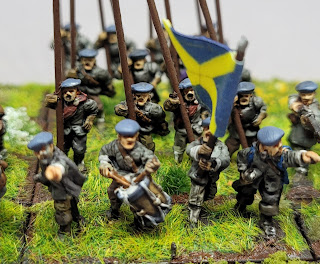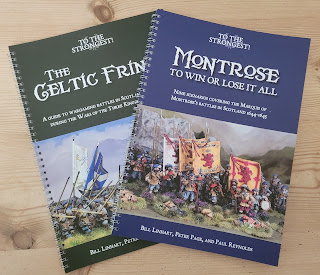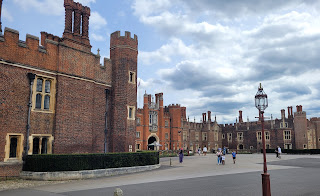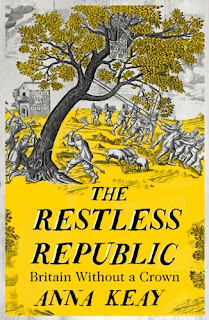Earl of Crawford-Lindsay's Regiment of Foot
The third of three Covenanter regiments of foot to get their time in the spotlight.
John Lindsay, the Earl of Crawford-Lindsay would serve as a Colonel in both of the Bishops' Wars; however, he did not share sole colonelcy of these regiments. He would not take sole colonelcy of a regiment of foot until he was commissioned in 1643 in both the Ulster Army, and the Army of the Solemn League and Covenant. It is assumed that most of the men, for the Ulster regiment, came from Fife. It is thought that the regiment may have taken part in expeditions led by Munro in 1643. Lindsay would return to Scotland in 1644 to join his 'other' regiment.
The Solemn League regiment was raised in 1643 in the Fife presbyteries of Cupar and St Andrews: they were commanded initially by Thomas Moffat, whilst Lindsay was in Ulster. There appears to have been a considerable amount of exchanges of officers between he two regiments during this time.
The regiment marched south with Leven's Army taking the fort at South Shields, fighting at Boldon Hills (aka Hylton), before laying siege to York and fighting at Marston Moor. They were one of only three covenanter regiments that held their ground in the front line at Marston; they were brigaded with the Midlothian foot to the left of Fairfax's cavalry. It is thought that the two regiments endured the worst of the battle, being charged by the Royalist horse three times, but surprisingly suffering the loss of only three men. Their brigade captured Sir Charles Lucas.
They would again be brigaded with the Midlothian foot at the siege of Newcastle, before being ordered back to Scotland, in September 1644.
They would join Baillie's army in the fight against Montrose, helping to relieve Dundee. During this time they suffered from desertion; Robert Blair, a former chaplain of the regiment, delivered a sermon telling the regiment that God had protected them at Marston, and that they had fallen into sinfulness since then. Unless they repented they would be beaten by a lesser foe.
Nine days later the regiment would be annihilated at Kilsyth.
The regiment would be raised anew in 1650 but does not appear to have served on the Worcester campaign.
Another 'straight out of the bag' unit, although pikemen have had their hands drilled (as PP don't make lowland pike open hand). halberdiers are artillerymen with added Donnington halberd heads. They carry the first captain's colour, from Maverick Models.















Wow, wonderful looking regiment!!
ReplyDeleteThanks for your kind words Phil
ReplyDeleteExcellent. Just by chance I'm currently gearing up for a re-fight of Kilsyth using the Victory Without Quarter rules. My own Crawford-Lindsay's need a bit of a refresh. I've got some friends that live in Kilsyth and managed to walk some of the battlefield (the parts not flooded by a new reservoir) last time I visited. I've been referencing Stuart Reid's interpretation of the battle but still not certain he has bottomed out the initial disposition of each side.
ReplyDelete